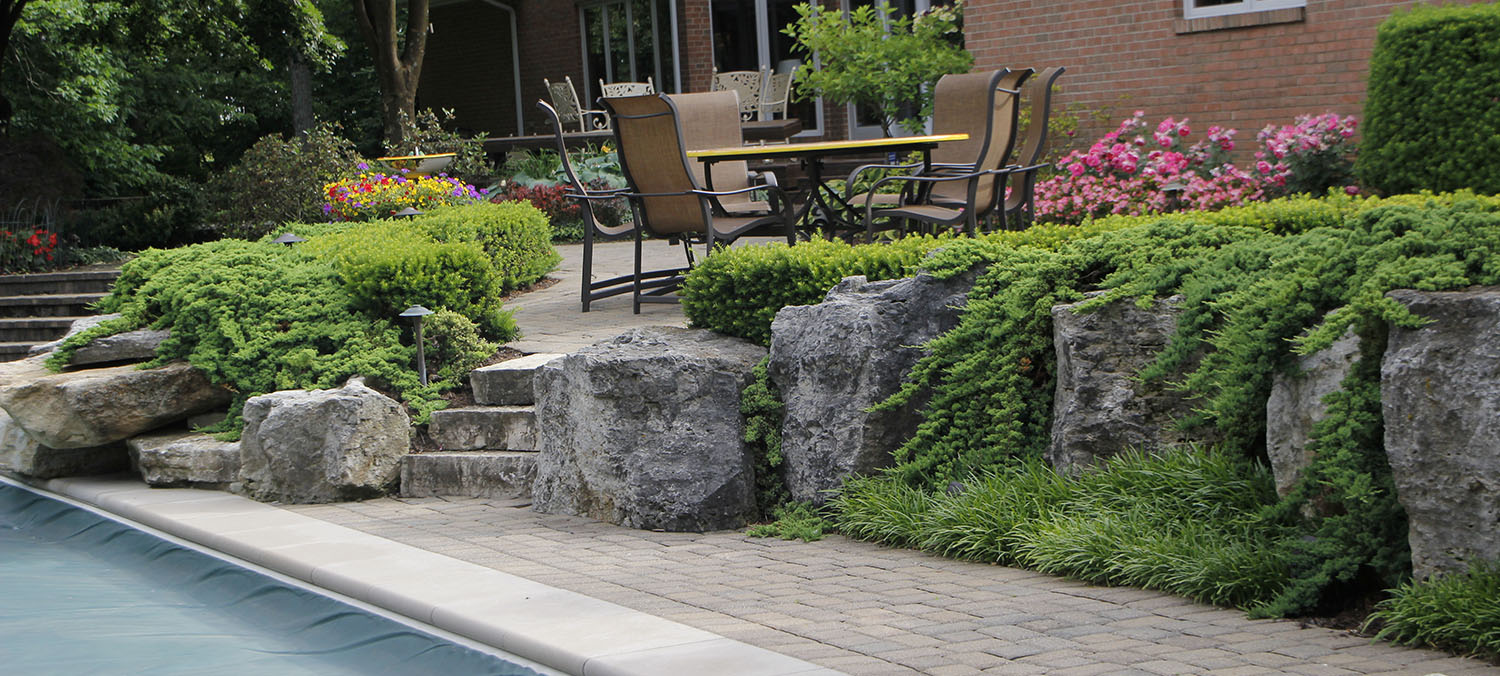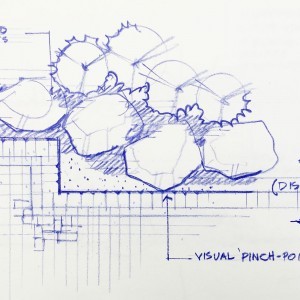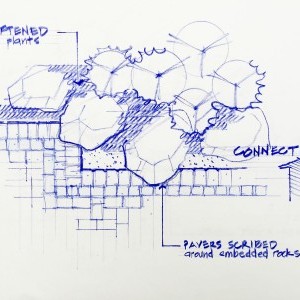Rock Solid: the Importance of Rocks in Landscape Design
Large rocks have long been a trademark of Fullmer’s landscape installations. Like many others, we've noticed that there’s something stabilizing about the presence of rocks in a garden. When properly chosen and placed, there’s an unmistakable sense of steadiness and a connection to the natural setting.
Here in the Miami Valley of Ohio, we usually need to place the rocks in the landscape. Nevertheless, as ‘Artists in Landscape Design,’ our goal is often to give the impression that the rocks are something we uncovered and had to work around. In some regions of the world, those who design and build gardens must deal with existing rock stratum; However most of the time in our geographical region, the native bedrock itself is buried deep below the clay, and the glacial boulders are portable…if you’ve got the time and equipment.
We’ve got it.
We choose the rocks, deliver them, and then with an artist’s eye and appropriate equipment, place them in your designs for the beauty, function, and stabilization of the project at hand.
When installing rocks, it’s important to keep some basic principles in mind, to prevent visual distraction and ensure visual satisfaction:
Embedment
There are fewer things more distracting to the eye than a poorly-placed rock in a landscape scheme. Boulders are such an integral part of a solid design, yet too often they are treated merely as an accessory or a component to be checked off the design list. Because rocks function as stabilizers in a landscape, care should be taken to secure them in a way that allows their natural groundedness to shine. This means taking time to embed boulders into the ground, as if the rock is actually part of the landscape around it. Maintaining a sensitive balance between a rock and its context is important, or designs begin to look top-heavy and unstable. The composition ‘Rule of Thirds’ helps in this area, reminding us that our eyes are most comfortable when at least one-third of the rock is set into the soil.

Softening
Just as it’s important to surround boulders with soil and ensure their place in the natural context, it’s equally important to relax their hard edges with lots of plant life— spreading groundcover and perky ferns to surround distantly-placed rocks, dense moss between concrete pavers and the cracks in a stone wall, or sections of ivy to cascade over boulders secured in an embankment. Without the green softness of plant foliage, rocks are heavy and unfriendly, but their hardness is the perfect, welcoming complement to soil and plant life.
Scribing
Most often used in carpentry, scribing is the method used to create cohesiveness between two substances. Wood and stone, generally, but in this case, boulders and concrete pavers. While the trend in landscaping is to create a bed, place your rocks, and leave a wide margin for the paving, we’ve learned the beauty in the extra work of scribing pavers to connect with their boulder neighbors. While it might take longer to cut pavers to fit neatly around a stone, the resulting look is tasteful and cohesive. Without even thinking about it, your eye assumes the rock is a natural element to which your obviously man-made paving had to adjust. Paying attention to detail when designing and installing a landscape may seem unnecessary in the moment, but your eyes will thank you later!
We at Fullmer’s enjoy using rocks in our designs when the site calls for them, and we plan to continue that for as long as we have a legacy, employing the embedding, softening, and scribing methods to ensure that your landscape is grounded in its natural setting and pleasing to the eye!




